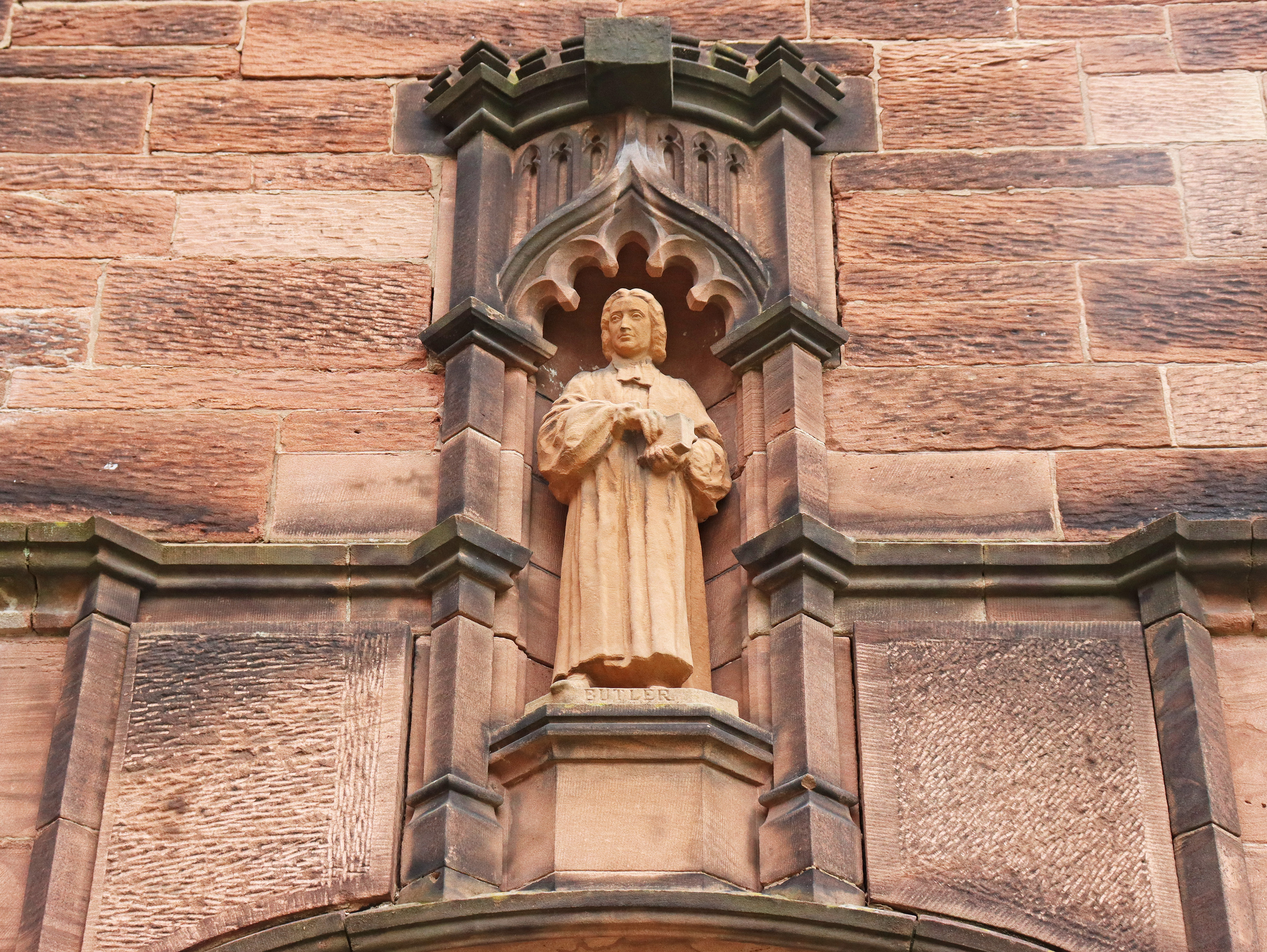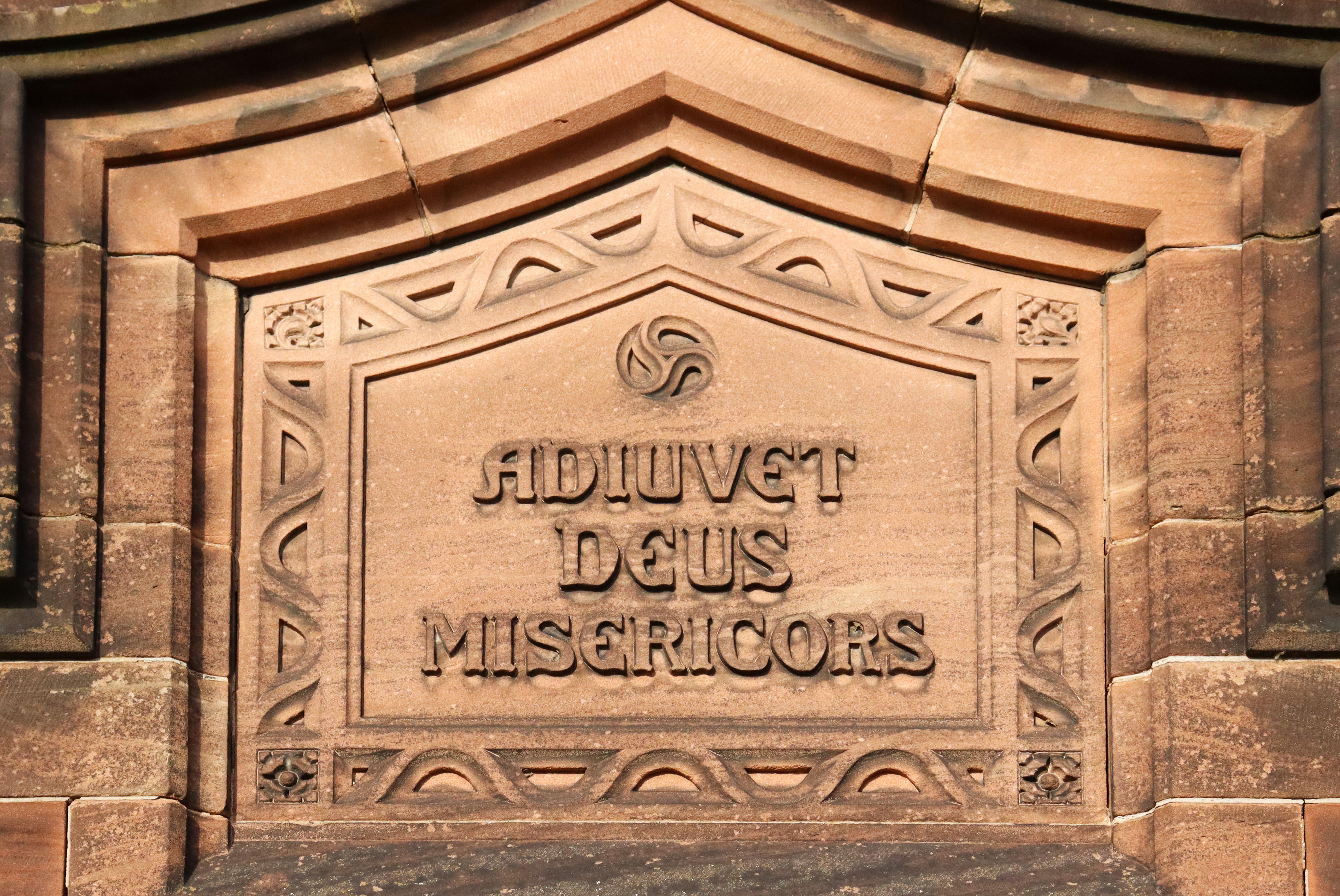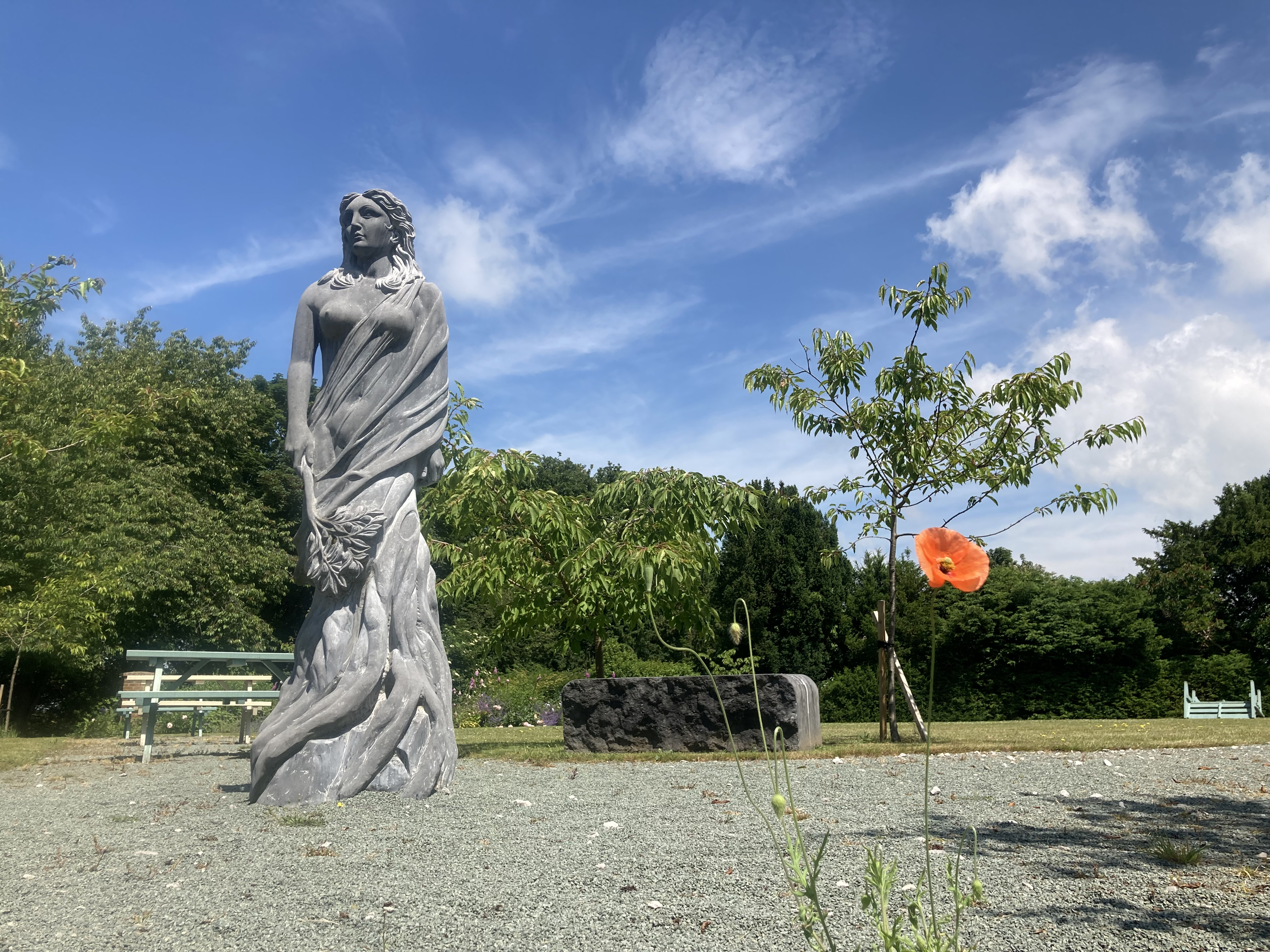Gladstone’s Doctors
If one walks past the Gladstone munument towards the Library, one may observe four other sculptures placed in niches around its frontage. These commemorate Gladstone’s four ‘doctors’ - Aristotle, St Augustine, Dante and Joseph Butler - the writers he singled out as the intellectual mentors who guided his thought throughout his life. John Morley’s 1903 biography quotes Gladstone as saying ‘ever since I began to pass out of boyhood I have been feeling my way; owing little to living teachers, but enormously to four dead ones (over and above the four gospels)’.
Morley’s biography had been commissioned by the Gladstone family and proved a remarkable bestseller. Most of its profits went towards building the Library’s residential wing which was completed in 1906 by the Chester architects Douglas & Minshull. The sculptures were presented as its finishing touch by Gladstone’s eldest daughter Agnes and his third son Henry. They are the work of the sculptor Arthur George Walker (1861-1939) who is best known for his London monuments to Florence Nightingale and Emmeline Pankhurst. He also sculpted figures on the facade of the Victoria & Albert Museum, including the designer William Morris, pioneer of the Arts & Crafts movement.

A sculpture of Butler
Approaching the main entrance to the Library, one sees the figure of St Augustine of Hippo (354-430 AD) standing over the doorway, above the carved Latin motto Adiuvet Deus Misericors (Merciful God, Help Us). This motto includes a triskelion symbol known as the Monad which has been adopted as the Library logo and also inspired the glass altarpiece made for the Library’s chapel by Linda Crabbe in 2009. The ancient Greek word monad may be translated as truth, unity or divinity, and was Gladstone’s original choice of name for his Library, since he believed the pursuit of learning should aim to reconcile the division between modern religious and secular thought.

The carved stone motto
Augustine was the most important theologian of the early Western Church, second only to St Paul in his influence on its doctrine. To his right is the figure of Joseph Butler (1692-1752), Bishop of Durham, chiefly remembered for his book The Analogy of Religion which defended orthodox Christian belief against the sceptical freethinkers of the Enlightenment. Gladstone began editing Butler’s writings in the 1840s and, after retirement from politics, finally published an edition of his works in 1896. On the front of the residential wing, nearest the Church Lane entrance, is the figure of Greek philosopher Aristotle (384-322 BC) whose ethical works provided Gladstone with the tools to analyse the social and moral questions of his time. In particular, he considered Aristotle’s treatise Politics ‘a book of immense value for all governors and public men’.

A sandstone sculpture of Dante set in a nook between window frames
Gladstone had studied Aristotle, Augustine and Butler at Oxford (where he gained a double-first in Classics and Mathematics). The Latin motto of the University - Dominus Illuminatio Mea (The Lord Is My Light) - is carved above the original entrance (now adjoining the car park) to the Reading Rooms which opened in 1902. Set into the front wall of the Theology Room is the figure of the Italian national poet Dante Alighieri (1265-1321). While a schoolboy at Eton, Gladstone had been introduced to his work by his close friend Arthur Hallam, himself a poet whose early death inspired Tennyson’s famous elegy In Memoriam. Dante’s Divine Comedy is an allegory of the soul’s journey towards God through Hell, Purgatory and Paradise, expressing a spiritual vision which delighted Gladstone. Italy itself played a significant role in his life; in 1839 he proposed marriage to Catherine Glynne while visiting Rome; in 1850 an encounter with political prisoners in Naples shifted his views radically towards liberty and Liberalism. He became a powerful advocate for the cause of Italian national unification. 
The Sophia statue in the back gardens
Walking through to the Library’s rear garden reveals a recent addition to its collection of symbolic statuary. There stands the figure of Sophia, the female personification of divine wisdom. Carved from a single block of Kilkenny blue limestone, she is depicted as being formed out of an olive tree (the symbol of peace, prosperity and hope), with her breast exposed to nourish the world. She was installed in 2010 and is the work of sculptor Tom Waugh (grandson of the novelist Evelyn). He also designed the four neighbouring slate benches, engraved with Welsh and English script - Cariad (Love), Heddwch (Peace), Gwirionedd (Truth) and Cyfiawnder (Justice) - a perfect spot for contemplating the harmonies of human knowledge and divine Creation.
By Jonathan Hopson. This article was first published in The Voice (Hawarden parish magazine) in summer 2024.

